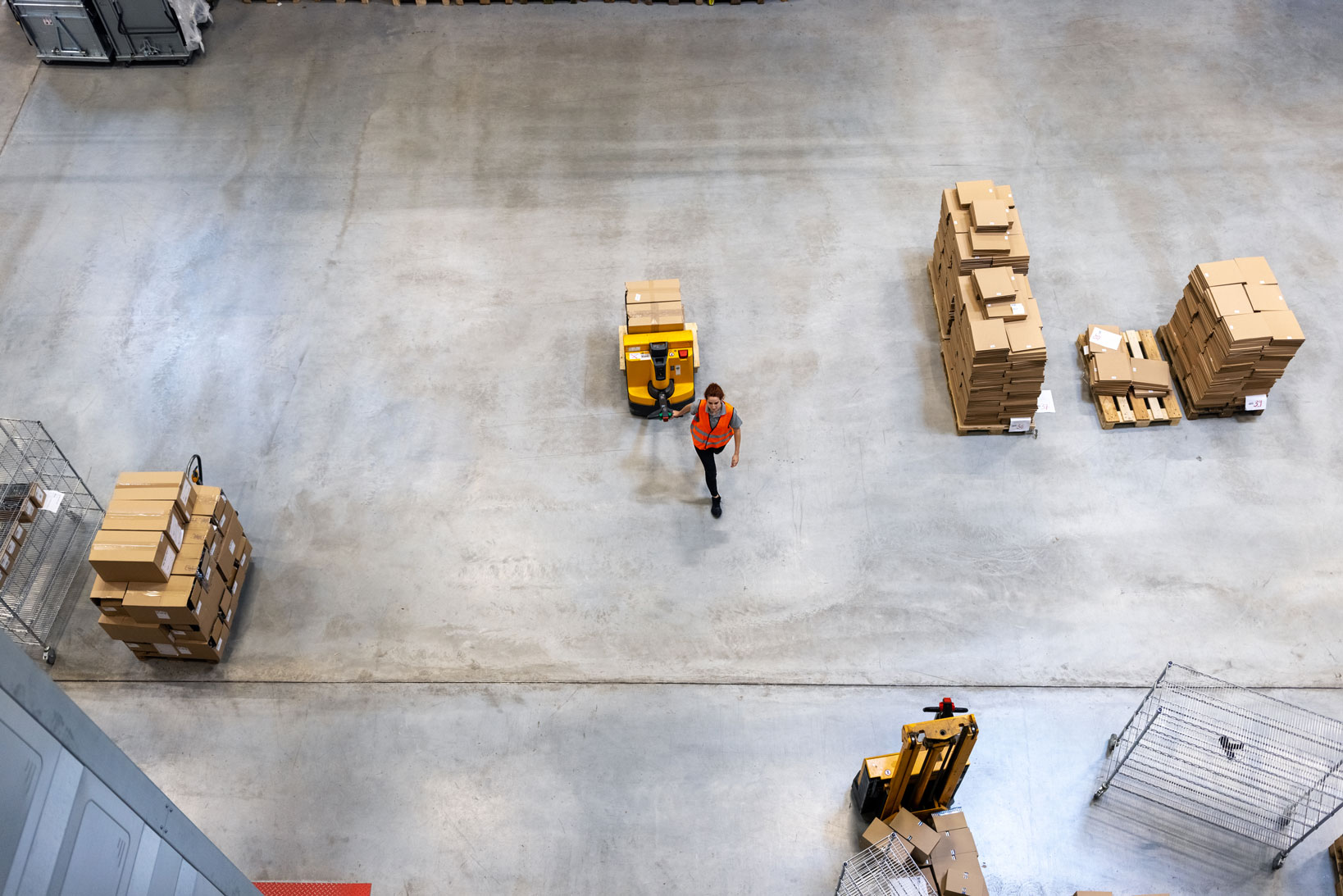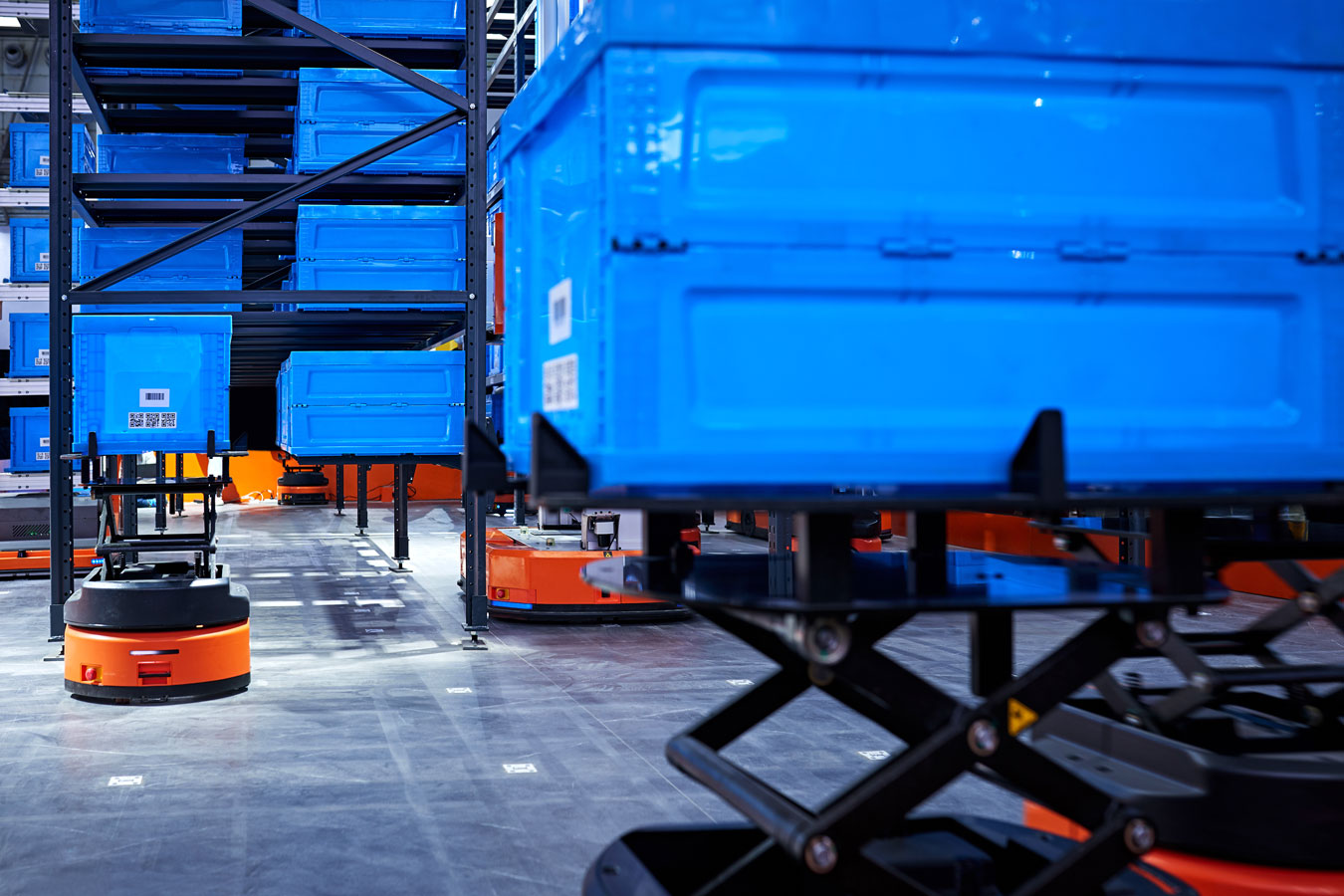Colleague robot lends a hand
Laden Sie unseren Kalender herunter
Schritt 1:
Öffnen Sie Ihren Kalender in Outlook unter https://outlook.office.com/calendar.
Unter Windows können Sie auch Ihr Outlook-Programm nutzen. Die nötigen Schritte weichen dann ggf. leicht ab.
Schritt 2:
Klicken Sie auf Kalender hinzufügen und wählen Sie Aus dem Internet abonnieren.
Schritt 3:
Fügen Sie folgenden Link ein und klicken Sie auf Importieren.
https://outlook.office365.com/owa/calendar/d35c67af88f64628a6018dbceff8877f@synaos.com/8d78e80490b8462db720d7687cbe5c204542545792701501371/calendar.ics
Geschafft! Ab sofort profitieren Sie von unsere Events-Kalender und sind immer über die aktuellsten Intralogistik-Events in 2024 informiert.
Schritt 1:
Öffnen Sie Google Calendar unter http://calendar.google.com.
Schritt 2:
Gehen Sie in die Einstellungen und klicken Sie unter Kalender hinzufügen auf Per URL.
Schritt 3:
Fügen Sie folgenden Link ein und klicken Sie auf Kalender hinzufügen.
https://outlook.office365.com/owa/calendar/d35c67af88f64628a6018dbceff8877f@synaos.com/8d78e80490b8462db720d7687cbe5c204542545792701501371/calendar.ics
Geschafft! Ab sofort profitieren Sie von unsere Events-Kalender und sind immer über die aktuellsten Intralogistik-Events in 2024 informiert.
Wenn Sie kein Outlook oder Google Calendar nutzen, funktioniert das Hinzufügen des Kalenders ggf. etwas anders. Sie können diese allgemeinen Schritte befolgen, um unseren Events-Kalender Ihrem Kalender-Programm hinzuzufügen.
Bei Schwierigkeiten können Sie auch Ihre IT-Abteilung um Hilfe fragen.
Schritt 1:
Öffnen Sie Ihr Kalender-Programm.
Schritt 2:
Navigieren Sie zu der Stelle in Ihrem Programm, an der Sie einen Kalender hinzufügen können. Dies ist häufig in den Einstellungen oder der Menüleiste zu finden.
Schritt 3:
Wählen Sie die Option, bei der Sie einen Kalender aus dem Internet/per URL (oder ähnlich) abonnieren können und fügen Sie an der Stelle folgenden Link ein.
https://outlook.office365.com/owa/calendar/d35c67af88f64628a6018dbceff8877f@synaos.com/8d78e80490b8462db720d7687cbe5c204542545792701501371/calendar.ics
Geschafft! Ab sofort profitieren Sie von unsere Events-Kalender und sind immer über die aktuellsten Intralogistik-Events in 2024 informiert.

Lifting packages, sorting and packing materials, maneuvering with a forklift truck, being on your feet for hours on end, walking many distances: The work of specialists in intralogistics is still physically demanding, even though automation and digitization have already made many tasks easier. Unfavourable climate conditions and wearing protective clothing often also make work difficult. In addition, there is a low wage level. For many people in Germany, such jobs are simply not attractive enough. According to a survey by the Munich-based Ifo Institute, around 50 percent of companies in the logistics sector have difficulty filling vacancies. Warehouse clerks and drivers in particular are often desperately sought after.
However, the problem not only concerns intralogistics and extralogistics, but also hinders productivity in many industries and is becoming increasingly acute. In the past year, the shortage of skilled workers in Germany reached a new record level. “Taking into account the professional fit, more than 630,000 vacancies for qualified specialists could not be filled in 2022 because there were no suitably qualified unemployed people available in the respective occupations nationwide. This is the highest level of the gap in skilled workers since the start of the observation period in 2010,” reported the Competence Center for Securing Skilled Workers at the German Economic Institute in April 2023.
Consequences of the birth decline
There is no prospect of major improvements in the number of applicants in industry and logistics, quite the opposite.

The reason for this is long-term demographic change: The so-called baby boomers, i.e. the high-birth generation of the post-war period, are gradually leaving working life, while significantly fewer young people are entering the labor market. The Federal Ministry of Economics and Energy expects the total number of employees to shrink by a third by 2060. Because the proportion of young people completing and studying Abitur is also growing, there are even fewer people interested in vocational training — for example in intralogistics. The consequences: Companies are unable to fully exploit their sales potential due to staff shortages on logistics space and are competing for suitable applicants. The thin headcount is also having a negative effect on the existing workforce. This is shown by the results of a survey from 2022, which was carried out on behalf of the job portal Meinestadt.de among 210 specialists in the fields of logistics, warehousing and transport. According to this, around one in three feels burdened by stressful working conditions. Many work overtime and have to complete more and more tasks at the same time.
Extralogistics as a role model
The scenario of technological solutions for the shortage of human workers has actually long been obvious: Autonomous mobile robots and automated guided vehicles (AMRs and AGVs) will be able to take on many transport tasks in intralogistics in the future. The increased use of automation technology is also appropriate for sorting, picking and palletizing. Thanks to integrated proximity sensors, safety laser scanners and cameras, mobile robots navigate safely and independently even in heavily frequented production and warehouses. They reliably recognize people, load trains or shelves, avoid them or brake in good time. Intelligent software with AI optimizes all processes and orchestrates the interaction between people and technology. In many distribution centers and container terminals, such a high level of automation has already been achieved today with consistent digital interfaces and data collection. Extralogistics is therefore a pioneer and role model for intralogistic modernization. However, the associated investments pose a challenge for companies: “New technologies must pay for themselves in a relatively short period of time; highly complex and also cost-intensive solutions, such as order picking robots, are therefore not available,” reports the Federal Institute for Vocational Education and Training about the current situation in many intralogistics centers. However, the industry agrees that the future lies in digitization: In a survey of 194 industrial and logistics companies, 82 percent expect increased use of AI and automation in the coming years. This is the result of the study “Artificial Intelligence and Automation Technologies in Intralogistics”, which was carried out by the German Logistics Association together with GreyOrange. It highlights mobile robots as solutions that are currently in particular demand.
Practical experience
The large retail and industrial companies in particular are pioneers in showing what efficiency potential can be exploited through automation and how this supports the workforce in their work.

Zalando has been using pick-up robots at its Lahr site in the Black Forest since 2018 to relieve employees in intralogistics of unergonomic tasks. They grab individual shoe boxes, pick them up and transport them to the appropriate shelf. The robots not only work on picking racks, where space is limited, but can also grab and transport products individually. In the fashion retailer's Mönchengladbach warehouse, mobile robots move packaged orders between two sorting machines in the shipping area. Your trips are short but very frequent. By carrying out such orders fully autonomously, the robots significantly relieve employees.
Amazon has been steadily expanding the use of robotics since 2012. The mail-order company now uses a total of more than 520,000 automated drive units worldwide, including in sorting centers and air hubs. There are more than a dozen different robotic systems. As the company points out, its automation strategy is not aimed at a binary decision between people or machines. Instead, it is about people and technology working together securely and harmoniously to serve customers. Robots, for example, relieve employees of transporting heavy parcels. They help to minimize rotational movements and the risks of injury.
Robotics have also proven effective in manufacturing logistics. One example: In Audi plants, driverless transport systems (FTS) provide support in so-called supermarkets, among others — logistics areas where employees pre-assemble components in the correct order. In 2020, the automotive manufacturer introduced a new sequencing principle: Until now, employees had to travel long distances when picking according to the person-to-goods principle. The “Supermarket 2.0” system enables the goods-to-person principle on a large scale for the first time: The FTS drive under the containers with the required components and transport them in the correct order to a fixed picking station. There, a logistics employee assembles the components required on the assembly line. The Audi Fleet Manager acts as central control software. In the future, Audi will be able to save around 25 percent of storage space, as the shelves can be arranged in a more space-saving way.
More attractive job profiles
The interplay of automated hardware and intelligent software not only enables more efficient use of vehicles, space, energy and resources in intralogistics. Teamwork with robots can also make the job more interesting and pleasant for the specialists working here. You are relieved of strenuous and monotonous work and can concentrate on more demanding tasks. In this respect, automation could not least also make intralogistics more attractive on the labor market.
Text: Felix Enzian
Photos: Chesky_W/Luis Alvarez/Comezora (Getty Images)
Schließen Sie sich 1.000+ Intralogistik-Insidern an, die Insights direkt per E-Mail erhalten.



